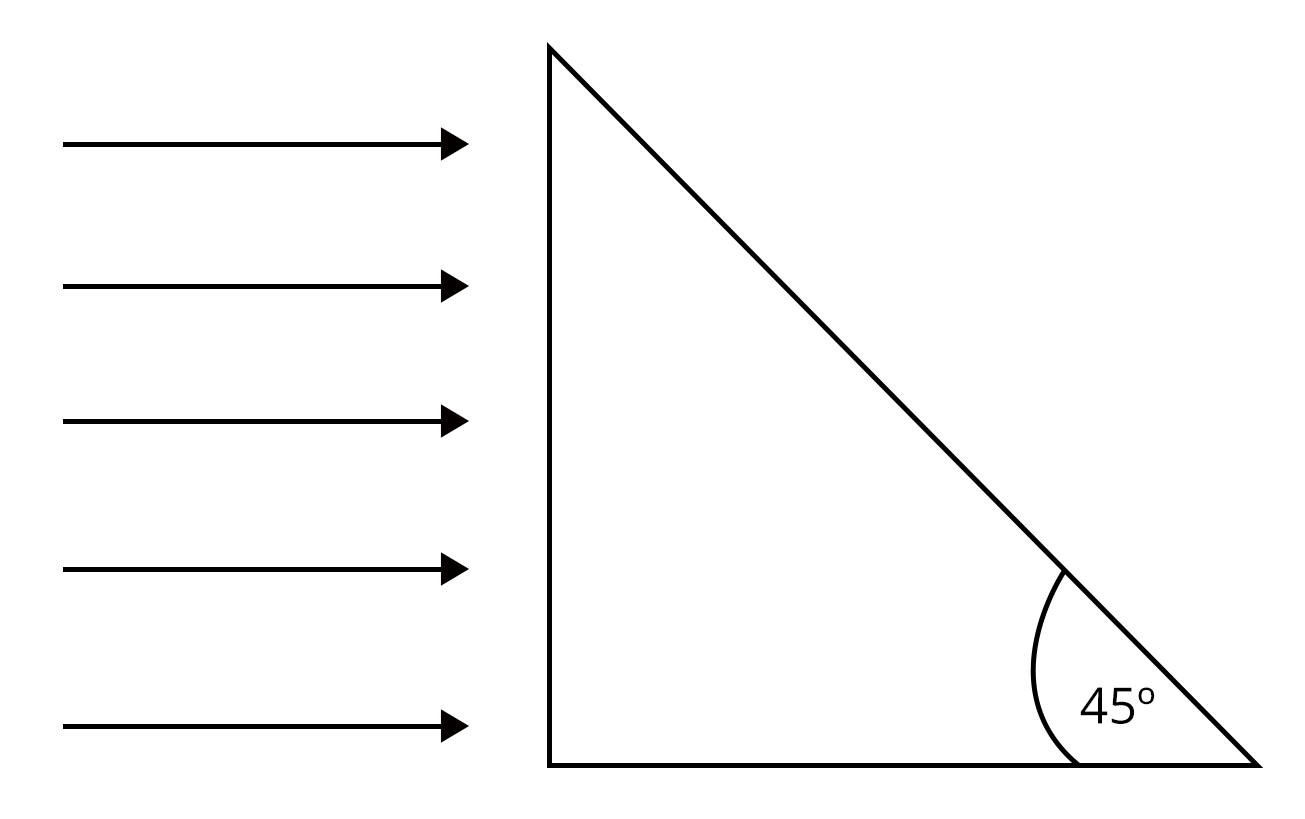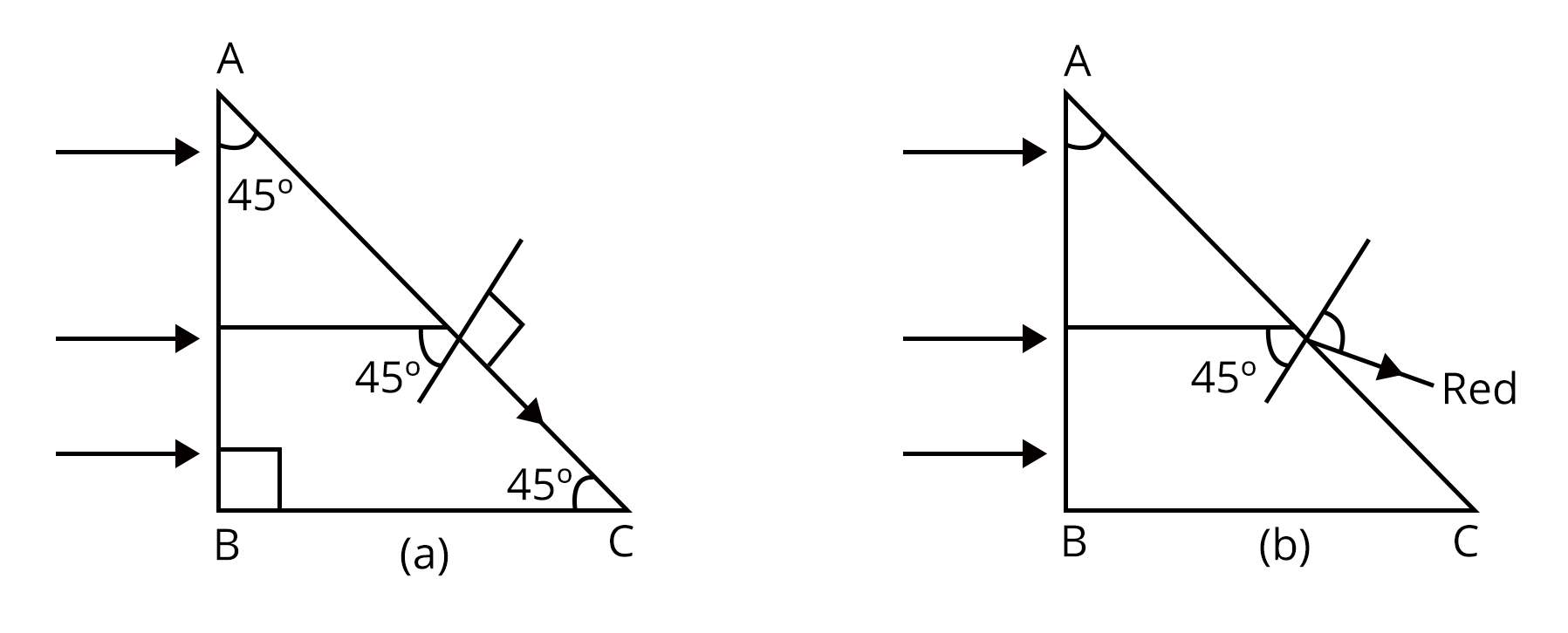




Important Concept of Optics for JEE
This chapter gives us the answer to a few interesting questions like “what is optics”, “what is light” and “what are its various properties and applications”. Optics is one of the branches of physics in which we study the behaviour of light and how under different circumstances, its properties get altered. The chapter also includes various examples of optics, types of optics, theory of optics and uses of optics in our day to day life.
The major concepts of this chapter include:
Reflection of Light: This topic includes the behaviour of light when it falls on the surface of plane mirror and curved mirror and also gives the laws related to it.
Refraction of Light: This topic tells us about how a ray of light travels when it is passed through a rare medium to a denser medium and vice-versa.
Dispersion of Light: This topic deals with what happens to a ray of light when it passes through a prism.
Optical Instruments: This topic includes various types of optical instruments like simple microscope, compound microscope, astronomical telescope and reflecting type telescope.
Huygens Principle and Interference of Light: In this topic, we study the wave nature of light and what happens when two waves are superimposed on each other.
Diffraction and Polarisation: This topic gives us answers about what happens to a ray of light when it passes through a single slit and how we can restrict the electric vector of the light.
Now, let's move on to the important concepts and formulae related to JEE and JEE Main exams along with a few solved examples.
JEE Main Physics Chapter-wise Solutions 2025
Important Topics of Optics
Reflection of light
Refraction of light
Dispersion of light
Optical instruments
Huygens principle and interference of light
Diffraction and polarisation of light
Optics Important Concepts for JEE
List of Important Formulae for Optics
Solved Examples
1. When a glass plate with a refractive index of 1.3 is put in the path of one of the beams in Young's double slit experiment, the fringes are displaced by a distance $x$. The fringe shift is $(5/2)x$ when this plate is replaced by another plate of the same thickness. The second plate's refractive index will be_______.
Sol:
Given:
Refractive index of glass plate, $\mu_1 = 1.3$
Shift in the fringes is $(5/2)x$.
To find, $\mu_2 = ?$
To solve this problem, we have to use the relation between the thickness of a plate, path difference and its refractive index. Also, we have to use the relation of fringe width.
The relation between the path difference($\Delta$), the thickness of the plate ($t$) and its refractive index ($\mu$) is given as
$\Delta=(\mu-1)t$
The path difference of $\lambda$ has introduced the phase difference of $\beta$. Therefore, a path difference of $(\mu-1)t$ that will introduce a shift of $x$ is given as
$x=\frac{(\mu-1)t\beta}{\lambda}$
In the case of the first plate, we can write:
$x=\frac{(\mu_1-1)t\beta}{\lambda}$.........(1)
In the case of the second plate, we can write:
$\dfrac{5x}{2}=\frac{(\mu_2-1)t\beta}{\lambda}$.........(2)
After dividing eq. (2) by (1), we get:
$\frac{(\mu_2-1)}{(\mu_1-1)}=\frac{5}{2}$
On further solving, we get:
$\mu_2-1 = \frac{5}{2} (\mu_1-1)$
Now, after putting the value of $\mu_1$, we get:
$\mu_2-1 = \frac{5}{2} (1.3-1)$
$\mu_2-1 =2.5 \times 0.3$
$\mu_2-1 = 0.75$
$\mu_2=0.75+1=1.75$
Therefore, the refractive index of the second plate is 1.75.
Key point: The knowledge of the concept of path difference is essential for solving such problems.
2. The slits in Young's double-slit experiment are spaced by 0.3 mm, and the screen is 130 cm distant. To obtain interference fringes on the screen, a laser beam with two wavelengths, 600 nm and 500 nm, is utilised. Calculate the shortest distance between the shared centre maxima and the point where the bright fringes caused by both wavelengths coincide.
Sol:
Given:
Distance between the slits, $d=0.3\,mm=0.3\times 10^{-3}\,m$
Wavelengths of the laser, $\lambda_1=600\,nm=600 \times 10^{-9}\,m$
And, $\lambda_2=500\,nm=500 \times 10^{-9}\,m$
Distance between slits and screen, $D=130\,cm=1.3\,m$
In order to solve this problem, we have to apply the concept of central maxima in interference pattern. Let $x$ be the distance between the centre maxima and the point at which the bright fringes caused by both wavelengths coincide.
Now for $\lambda_1$, we can write the condition for bright fringe as
$x=\frac{n\lambda_1 D}{d}$......(3)
Similarly, for for $\lambda_2$
$x=\frac{m\lambda_2 D}{d}$........(4)
After dividing the equations (1) and (2), we get:
$\frac{m}{n}=\frac{\lambda_1}{\lambda_2}$
$\frac{m}{n}=\frac{600 \times 10^{-9}}{500 \times 10^{-9}}$
$\frac{m}{n}=\dfrac{6}{5}$
From the above relation, we can conclude that the central maxima of $5^{th}$ bright fringe of $\lambda_1$ coincides with the $6^{th}$ bright fringe of $\lambda_2$.
Now, using equation (3), we can find the value of $x$ as
$x=\frac{n\lambda_1 D}{d}$
$x=\frac{5\times 600 \times 10^{-9} \times 1.3 }{0.3\times 10^{-3}}$
$x= 13000 \times 10^{-6}\,m=0.13\,mm$
Therefore, the shortest distance will be 0.13 mm.
Key point: The concept of interference of light and its conditions for bright fringes is important to solve this problem.
Previous Years’ Questions from JEE Paper
1. A beam of white light is incident on the glass air interface from glass to air such that green light just suffers total internal reflection. The colours of the light which will come out to air are
violet, indigo, blue
all colours except green
yellow, orange, red
white light
Sol:
According to the question, it is given that white light is incident on the glass air interface from glass to air and green light suffers total internal reflection. We know that white light consists of seven bands of colours i.e, VIBGYOR whose wavelength increases as we go from violet to red colour.
Therefore, the wavelengths of yellow, orange and red colour light are greater than the wavelength of green colour light, while the wavelengths of violet, indigo and blue are lesser than green colour light.
The refractive index relation under total internal reflection is given as
$\mu=\frac{1}{\sin C}$
And as $\mu \varpropto \frac{1}{\lambda}$
We can conclude that
$\sin C \varpropto \lambda$
Hence, $C$ will be greater for yellow, orange and red colour light. Therefore, these colour lights will come into the air from the glass.
Key point: The concept of total internal reflection and the relation between refractive index and wavelength of light are the important keys to solve this problem.
2.A beam of light consisting of red, green and blue colours is incident on a right angled prism, as shown in figure. The refractive indices of the material of the prism for the above red, green and blue wavelengths are 1.39, 1.44 and 1.47, respectively. The prism will
a. separate part of the red colour from the green and blue colours.
b. separate part of the blue colour from the red and green colours.
c. separate all the three colours from one another.
d. not separate even partially any colour from the other two colours.

Sol:
Let’s consider that critical angle is $C$ and it is equal to $45^\circ$.

Using the concept of total internal reflection, we can write the refractive index as
$\mu=\frac{1}{\sin C}$
$\mu=\frac{1}{\sin 45^\circ}$
$\mu= 1.414$
It is given that the rays are falling normally on face AB. If the angle of incidence is greater than C, then the rays will suffer total internal reflection. Thus, if $\mu$ is greater than 1.414 then the colour will suffer total internal reflection.
For red colour, the refractive index is 1.39 which is less than 1.414 but for the green and blue colurs, the refractive indices are 1.44 and 1.47, which are more than the 1.414. Hence, red colour will emerge out of the prism while green and blue colours suffer total internal reflection. Hence, option a is correct.
Key point: The phenomena of total internal reflection is the crucial key to solve this problem.
Practice Questions
1. In a single slit diffraction experiment, the first minimum for red light (660 nm) coincides with the first maximum for some other wavelength $\lambda$. Calculate $\lambda$.
Ans: 440 nm
2. Find the minimum thickness of a film which will strongly reflect the light of wavelength 589 nm. The refractive index of the material of the film is 1.25.
Ans: 118 nm
Conclusion
In this article, we have studied concepts like the reflection of light, refraction of light, dispersion of light and much more. We have also discussed the wave nature of light and phenomena associated with it like interference of light, diffraction and polarisation of light. We have also discussed the types of optics and various examples of optics related to day to day life.
Important Related Links for JEE Main 2025
FAQs on JEE Important Chapter - Optics
1. What is the weightage of the chapter Optics in the JEE exam?
Optics is perhaps one of the most often questioned topics in JEE main, particularly in JEE Advanced. So, certainly, it is heavily weighted in the JEE examinations. Every year, approximately 3-4 questions are asked from this chapter, which leads to approximately 4-5 % weightage.
2. Is it crucial to prepare the Optics chapter for JEE?
If someone wants to score well and achieve a better rank in JEE competitive exams, then it is very important to prepare for this chapter. Moreover, the weightage of this chapter is more as compared to the others; hence it has to be given more importance.
3. Is it truly beneficial to practise previous years’ questions based on this Optics chapter for this exam?
We must practise previous years’ questions in order to score well and become familiar with the exam's difficulty level. It not only enhances our self-esteem but also exposes us to areas where we may need practice. Solving previous 10 to 15 years’ question papers can help you better comprehend a concept and can also give you an indication of how many times a concept or topic has been repeated in the test. You can prepare for physics chapters and measure JEE notes by practising previous years’ questions, which will turn out to be beneficial.























